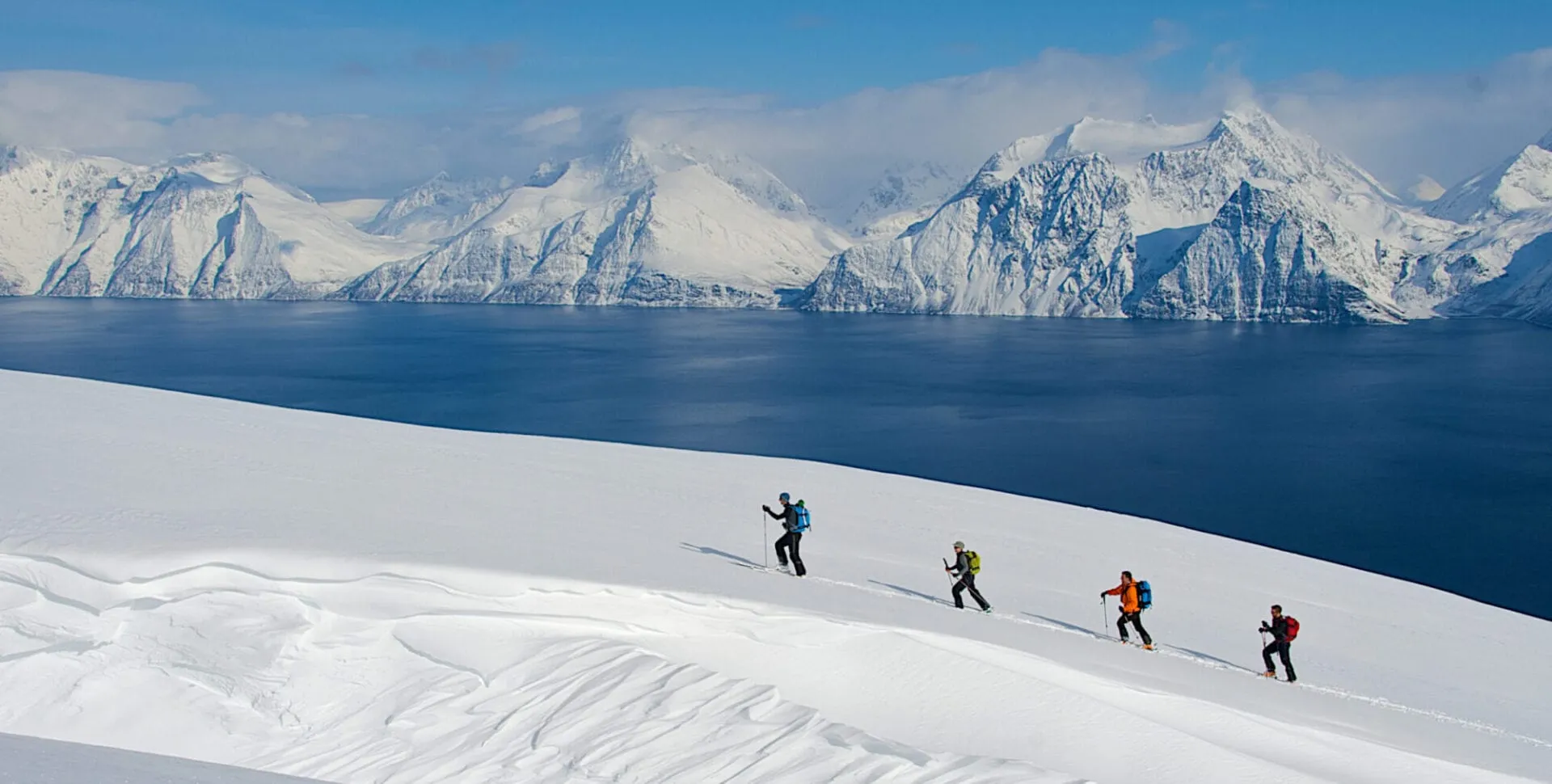Pre-Trip Planning for Ski Touring in Norway
Everything you need to know before embarking on your Norway ski adventure
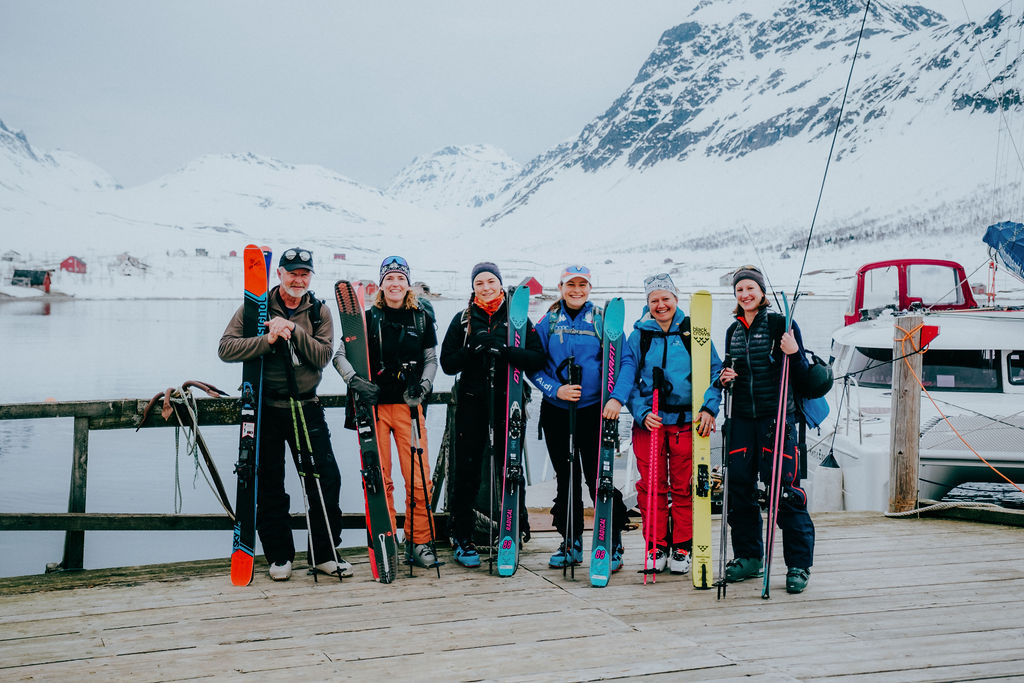
Is your Norway ski touring trip fast approaching?
You’re probably wondering if you’re missing any essential items or information. We’ve put together everything you need to know to ensure you have a seamless trip.

Packing List
Gear
- Touring skis or splitboard
- Skins for skis or splitboard
- Adjustable poles (telescopic poles required for splitboarders)
- Touring ski boots or snowboard boots
- Ski crampons
- Daypack for ski touring (recommend 30L)
- Avalanche safety kit; shovel, probe and transceiver (also available to rent)
- Sunglasses and sunscreen
- Goggles and helmet
- Water bottle or hydration pack
Daytime Clothing
- Weatherproof shell jacket and pants
- Warm down or synthetic “puffy” insulated jacket and / or other mid-layers
- Thermal base layers (top and bottom)
- Ski/snowboard socks
- Weatherproof ski gloves
- Glove liners for uphill (mountain bike/running gloves work well)
- Warm hat/toque and balaclava/face mask
- Baseball cap or sun hat
- Winter boots for walking around in the snow
- Casual clothes and shoes for the evening
- Comfortable clothes and slippers for keeping cosy/warm
Extras
- Small thermos and or mug
- Multi-tool, blister kit and first aid kit
- Snacks
- Headlamp with fresh batteries
Looking to purchase some new gear? Check out Mabey Ski’s Ultimate Ski Touring Gear Guide.
Language and Etiquette
Norwegian Words and Phrases
Most people in Norway speak English, so communication with the locals is very easy. If you want to know a few words and phrases, here are a couple useful ones:
Ja – Yes
Nei – No
Takk – Thank you
Vær så god – You’re welcome
Hvor er …? – Where is …?
Hallo – Hello
Ha det – Goodbye
Tipping in Norway
Tipping in Norway is not mandatory. If you receive exceptional service, it is accepted but most people do not tip otherwise. Servers are paid well so they do not rely on tips for their wage.
Norwegian Cuisine
Norwegian cuisine consists mainly of seafood. Salmon, cod, prawns and crab are staples for the locals. Lamb is the most common meat you will find and breakfasts usually consist of bread, cheese and slices of meat. Norwegian grocery stores and restaurants will carry a variety of foods but note that anything that needs to be imported will be quite expensive.
Norwegian Currency
The Norwegian currency is NOK (Kroner) which is sometimes mistranslated into “crowns” in English. Credit and debit cards are the main forms of payment in Norway, and are accepted at almost all establishments. Following Coronavirus, some places actually do not accept cash any more, though it is still useful to carry a bit of cash for random expenses.
Cash machines are readily available in towns and cities, and there is usually at least one place to withdraw money in more rural areas, whether it’s a petrol station, kiosk or grocery shop or a petrol station.
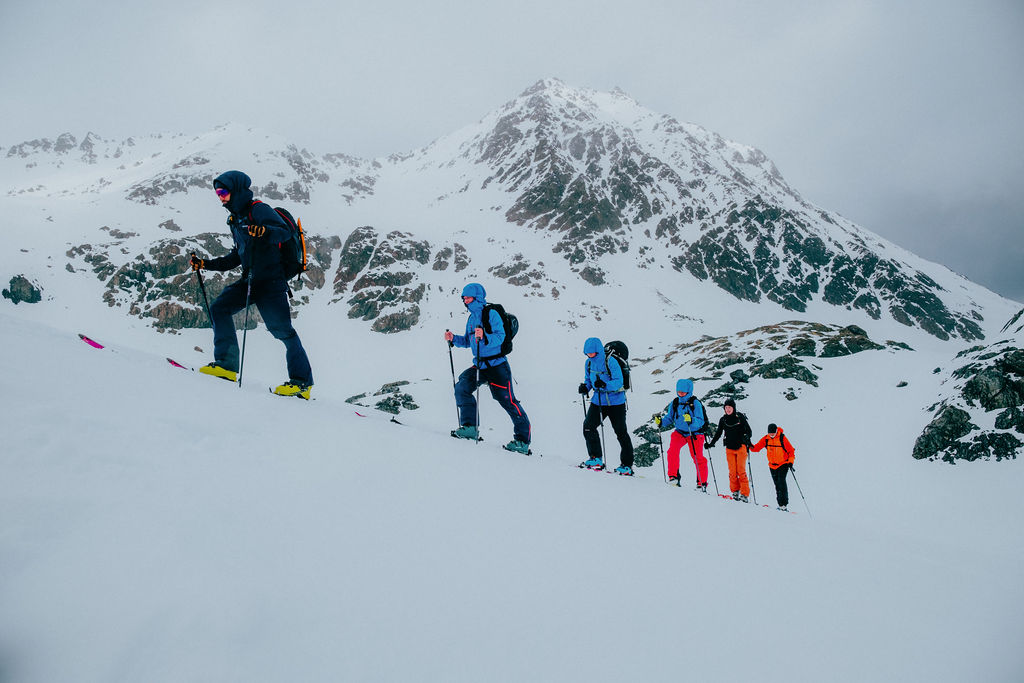
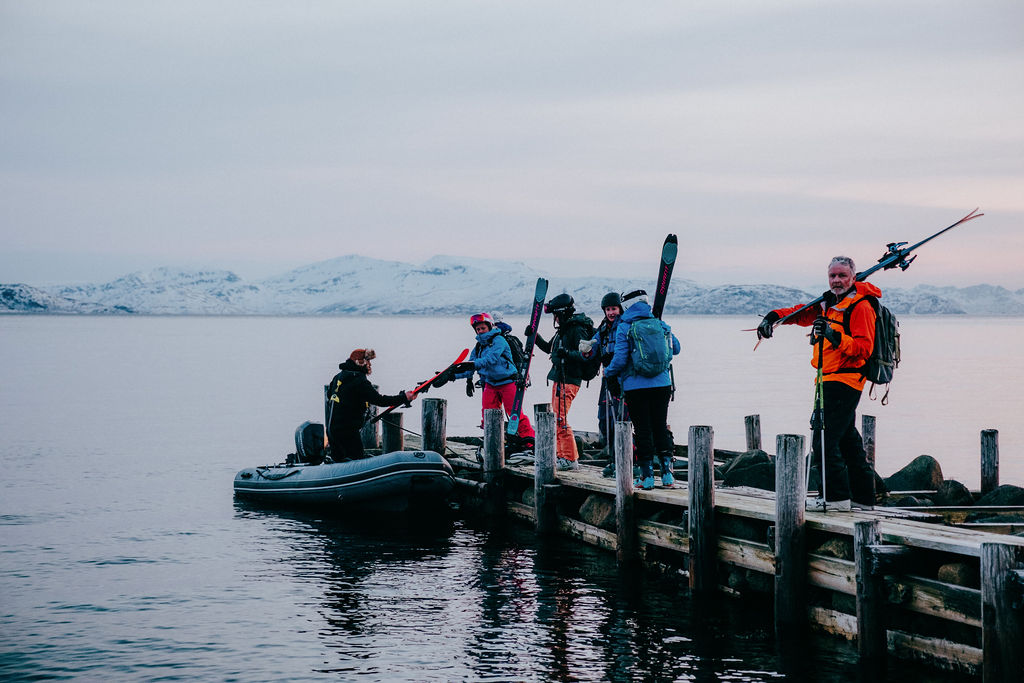
Getting Around Norway
Trains
Norway has a system of world famous railways that can take you to most major cities. The railway travels through beautiful areas and can be worth it simply for sightseeing.
Coaches
There are multiple companies that sell coach transfers from major cities. Perfect for long travel days as well as sightseeing.
Public Transit
If you’re looking to travel to smaller towns, or more specific areas, buses or taxis will be your best bet. Public transit is accessible in most areas and you can usually purchase your ticket on the bus. If you’re staying in one area and plan to make use of the transit system, it is worth looking into weekly transit passes or purchasing bulk bus tickets.
Taxis
Taxi services are available in most cities and towns throughout Norway.
Safety
In an emergency call 113
Call (116 117) to contact your local out-of-hours medical centre.
Snow and weather conditions
Safety is our first priority and if a guide decides it is unsafe for any reason, they will turn around or slow the tour down. Please be aware that bad weather or dangerous conditions may lead to the decision to change the location of the tour for both guide and participant safety. It is imperative that participants listen to the guide. Please note that access to any summits require clear weather conditions. Should the weather change we may have to change the itinerary slightly by switching days to make sure you get the best visibility and snow conditions throughout your trip.
How cold will it be?
Norway’s winter temperature averages around -10 to -20 degrees celsius. Most ski touring takes place in the spring where temperatures rarely drop below -10. It is important to dress in layers. Warm wool base layers should be worn as well as a waterproof jacket. Check out our Packing List above.
Will I get altitude sickness?
Altitude sickness is a reaction to the lower amounts of oxygen available at high altitudes (due to the lower air pressure), symptoms may occur from about 2,500m. The mountains in Norway typically top out below 2,500m, therefore altitude sickness is not usually a problem.
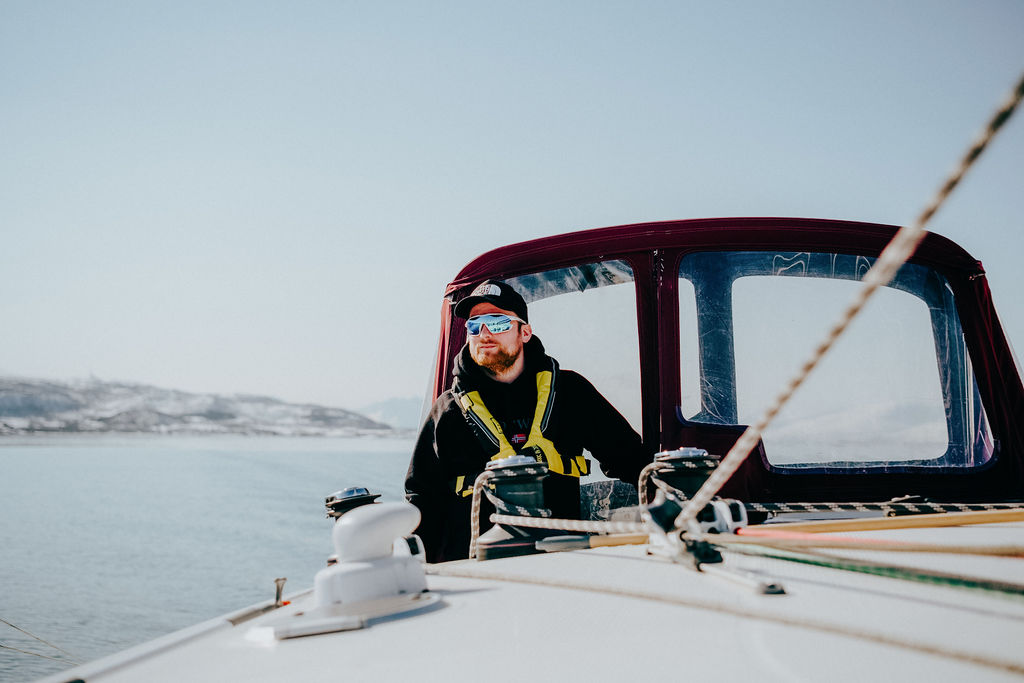
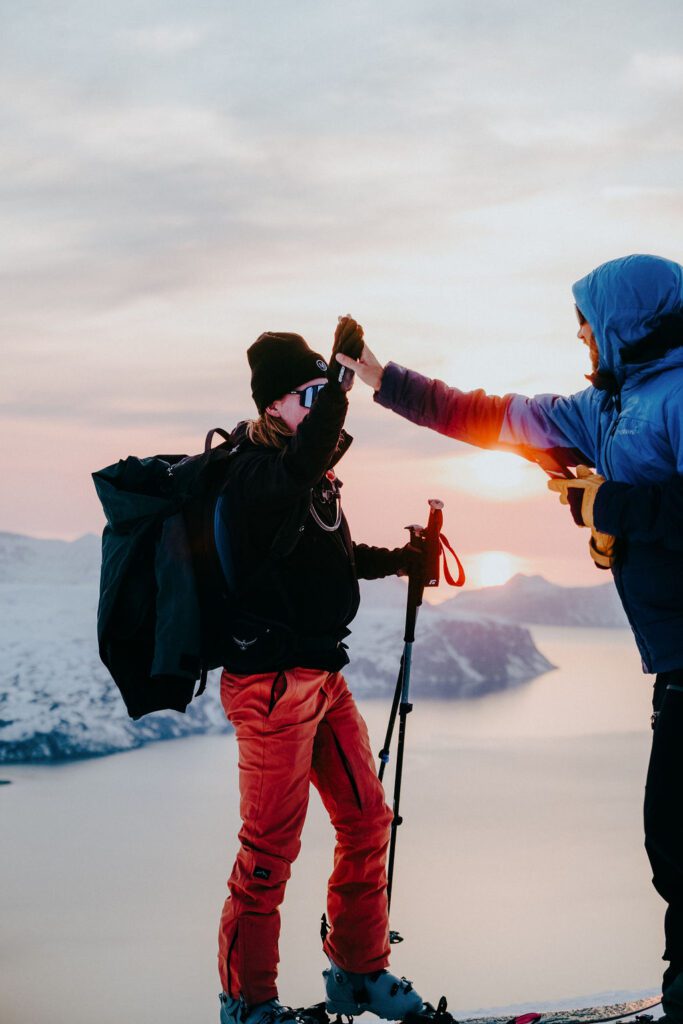
Travel Insurance
Mabey Ski recommends Global Rescue to provide evacuation and advisory services to our clients when traveling. We strongly suggest purchasing a travel membership anytime you are more than 100 miles from home. Both short-term as well as annual memberships are available. Please use this link or call Global Rescue directly and mention you are traveling with Mabey Ski. There are no restrictions on activities with Global Rescue memberships.
It is important to note that Global Rescue is a membership organization and not an insurance company. While Global Rescue provides the industry’s best evacuation and advisory services for complete protection while traveling, a membership should be combined with a travel insurance policy. Click here to get a quote for a combined plan.
Global Rescue also offers IMG Signature Travel InsuranceSM, which is a great option to protect you from financial loss due to trip cancellation, trip interruption, emergency medical care, lost luggage, etc. Trekking, climbing, biking, and off-piste skiing are covered by this insurance. To purchase a Signature Travel Insurance policy, please click here.

